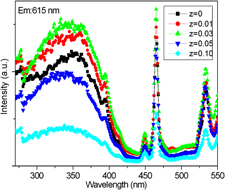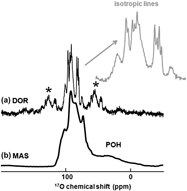Refine search
Actions for selected content:
106102 results in Materials Science
Dielectric relaxations of high-k poly(butylene succinate) based all-organic nanocomposite films for capacitor applications
-
- Journal:
- Journal of Materials Research / Volume 26 / Issue 19 / 14 October 2011
- Published online by Cambridge University Press:
- 15 September 2011, pp. 2493-2502
- Print publication:
- 14 October 2011
-
- Article
- Export citation
Influence of laser surface melting on glass formation and tribological behaviors of Zr55Al10Ni5Cu30 alloy
-
- Journal:
- Journal of Materials Research / Volume 26 / Issue 20 / 28 October 2011
- Published online by Cambridge University Press:
- 15 September 2011, pp. 2642-2652
- Print publication:
- 28 October 2011
-
- Article
- Export citation
Synthesis of novel core–shell structural AuNR@MCM-41 for infrared light-driven release of drug
-
- Journal:
- Journal of Materials Research / Volume 26 / Issue 18 / 28 September 2011
- Published online by Cambridge University Press:
- 15 September 2011, pp. 2414-2419
- Print publication:
- 28 September 2011
-
- Article
- Export citation
High temperature microcompression and nanoindentation in vacuum
-
- Journal:
- Journal of Materials Research / Volume 27 / Issue 1 / 14 January 2012
- Published online by Cambridge University Press:
- 14 September 2011, pp. 167-176
- Print publication:
- 14 January 2012
-
- Article
- Export citation
Graphene oxide nanoplatelets of different crystallinity synthesized from helical-ribbon carbon nanofibers and multiwall carbon nanotubes
-
- Journal:
- Journal of Materials Research / Volume 26 / Issue 20 / 28 October 2011
- Published online by Cambridge University Press:
- 14 September 2011, pp. 2632-2641
- Print publication:
- 28 October 2011
-
- Article
- Export citation
High-temperature deformation processing maps for a NiTiCu shape memory alloy
-
- Journal:
- Journal of Materials Research / Volume 26 / Issue 19 / 14 October 2011
- Published online by Cambridge University Press:
- 13 September 2011, pp. 2484-2492
- Print publication:
- 14 October 2011
-
- Article
- Export citation
Drug–matrix interactions in nanostructured materials containing fluoxetine using sol-gel titanium oxide as a matrix
-
- Journal:
- Journal of Materials Research / Volume 26 / Issue 22 / 28 November 2011
- Published online by Cambridge University Press:
- 13 September 2011, pp. 2871-2876
- Print publication:
- 28 November 2011
-
- Article
- Export citation
(Bi,Sb)2Te3-PbTe chalcogenide alloys: Impact of the cooling rate and sintering parameters on the microstructures and thermoelectric performances - ERRATUM
-
- Journal:
- Journal of Materials Research / Volume 26 / Issue 18 / 28 September 2011
- Published online by Cambridge University Press:
- 13 September 2011, p. 2460
- Print publication:
- 28 September 2011
-
- Article
-
- You have access
- HTML
- Export citation
Application of spherical nanoindentation to determine the pressure of cavitation impacts from pitting tests
-
- Journal:
- Journal of Materials Research / Volume 27 / Issue 1 / 14 January 2012
- Published online by Cambridge University Press:
- 13 September 2011, pp. 91-99
- Print publication:
- 14 January 2012
-
- Article
- Export citation
Fracture modes in micropillar compression of brittle crystals
-
- Journal:
- Journal of Materials Research / Volume 27 / Issue 1 / 14 January 2012
- Published online by Cambridge University Press:
- 13 September 2011, pp. 141-151
- Print publication:
- 14 January 2012
-
- Article
- Export citation
A contribution to understanding of low-load spherical indentation—Comparison of tests on polymers and fused silica
-
- Journal:
- Journal of Materials Research / Volume 27 / Issue 1 / 14 January 2012
- Published online by Cambridge University Press:
- 13 September 2011, pp. 239-244
- Print publication:
- 14 January 2012
-
- Article
- Export citation
Mesoscale friction anisotropy revealed by slidingless tests
-
- Journal:
- Journal of Materials Research / Volume 26 / Issue 18 / 28 September 2011
- Published online by Cambridge University Press:
- 12 September 2011, pp. 2373-2378
- Print publication:
- 28 September 2011
-
- Article
- Export citation
An investigation on photoluminescence and AC powder electroluminescence of ZnS:Cu,Cl,Mn,Te phosphor
-
- Journal:
- Journal of Materials Research / Volume 26 / Issue 18 / 28 September 2011
- Published online by Cambridge University Press:
- 12 September 2011, pp. 2394-2399
- Print publication:
- 28 September 2011
-
- Article
- Export citation
Luminescence enhancement of Eu3+-activated La2Mo2O9 red-emitting phosphor through chemical substitution
-
- Journal:
- Journal of Materials Research / Volume 26 / Issue 18 / 28 September 2011
- Published online by Cambridge University Press:
- 12 September 2011, pp. 2379-2383
- Print publication:
- 28 September 2011
-
- Article
- Export citation
Light-assisted physical aging in chalcogenide glasses: Dependence on the wavelength of incident photons
-
- Journal:
- Journal of Materials Research / Volume 26 / Issue 18 / 28 September 2011
- Published online by Cambridge University Press:
- 07 September 2011, pp. 2420-2427
- Print publication:
- 28 September 2011
-
- Article
- Export citation
High-resolution solid state NMR experiments for the characterization of calcium phosphate biomaterials and biominerals
-
- Journal:
- Journal of Materials Research / Volume 26 / Issue 18 / 28 September 2011
- Published online by Cambridge University Press:
- 07 September 2011, pp. 2355-2368
- Print publication:
- 28 September 2011
-
- Article
- Export citation
Instrumented nanoindentation investigation into the mechanical behavior of ceramics at moderately elevated temperatures
-
- Journal:
- Journal of Materials Research / Volume 27 / Issue 1 / 14 January 2012
- Published online by Cambridge University Press:
- 06 September 2011, pp. 65-75
- Print publication:
- 14 January 2012
-
- Article
- Export citation
JMR volume 26 issue 17 Cover and Back matter
-
- Journal:
- Journal of Materials Research / Volume 26 / Issue 17 / 14 September 2011
- Published online by Cambridge University Press:
- 06 September 2011, pp. b1-b5
- Print publication:
- 14 September 2011
-
- Article
-
- You have access
- Export citation
JMR volume 26 issue 17 Cover and Front matter
-
- Journal:
- Journal of Materials Research / Volume 26 / Issue 17 / 14 September 2011
- Published online by Cambridge University Press:
- 06 September 2011, pp. f1-f6
- Print publication:
- 14 September 2011
-
- Article
-
- You have access
- Export citation
Magnetoelectric effect in a bi-rectangular structure composed of negative/positive magnetostrictive and piezoelectric flakes
-
- Journal:
- Journal of Materials Research / Volume 26 / Issue 21 / 14 November 2011
- Published online by Cambridge University Press:
- 06 September 2011, pp. 2707-2710
- Print publication:
- 14 November 2011
-
- Article
- Export citation

















